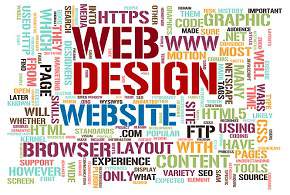3-D Illustration
Designers are not happy with Slack’s cutting-edge style of illustration, they want to add realism, organic shapes made with the purpose of blurring the boundaries between digital and physical, and, finally, adding depth. Brands like Stripe or Pitch come to the aid of designers by adding new forms of illustration, such as 3D. This only enhances the contrast between digital products and human beings, even if they are united by imaginary spaces in which people can manipulate digital elements including graphics and icons. This trend was not sustainable because of the high cost, but now, as Pinch Studio explains, the technology is at a point where you can design in 3-D without very high-performance equipment, thus opening the doors to many more designers. During the year 2020, 3-D web models will appear more and more often, attracting many users.
As a result of these changes, I expect to see more and more designers and developers use 3-D technology in graphic design and interaction. User interaction will be intensified by including all our senses in the experience.
Machine Learning in the Browser
Last year, the topic of machine learning was discussed fairly often and was expected to enter the frontend development world. Libraries such as Brain.js and TensorFlow.js have made running automatic learning in the browser a reality, thus leading to the ability to build a model or run a pre-trained model directly in the browser. Manual learning is easy to access and works on all devices and is extremely interactive with access to microphone, camera, GPS, mouse inputs and more. These input data that can be run through an automatic learning model, in order to improve applications and add new functions. The site aijs.rocks has a series of creative, but also fun, applications, such as Deep Drum, that run machine learning in the browser to generate continuous drum patterns. Running on the client side of machine learning has additional advantages, besides the extremely interactive character of the browser.
Algorithmic Design
Designing is now more and more automated, which means that traditional web designs are getting old. As a result, algorithms can help us avoid some of the drudgery, so we can spend more time being creative. These tools have the potential to augment the design process via automation, thus allowing for the designer’s creativity to thrive. This combined approach has a plus, to free the designers from the task of following the guidelines and freeing up valuable time, so that they can focus on the creative aspects, and allows design of systems that could not be executed with traditional tools. Rune Madsen, who wrote the digital book Programming Design Systems, points out that not everything has to be created with tools such as Figma, InDesign or Photoshop. We can design workflows that can combine traditional and custom tools, specific to your project, thus allowing you to work much faster and have better results.
Websites that Respond to the User’s Situation
We can soon have a site that responds correctly to the device, user input or environment, regardless of whether it is to improve usability or accessibility. Developer Mandy Michael has experienced a number of new sensor bees that allow us to we create useful, new and very interesting experiences for the web, using features such as device orientation and speech recognition. The Ambient Light Sensor, which is supported in Google Chrome behind a flag, will be increasingly implemented. These ambient light sensors can be found in all kinds of devices such as TVs, laptops or mobile phones. They are used to sense the amount of ambient light in the room. This can dim the brightness of the screen in low light environments to reduce eye strain. APIs can be used to create more compelling stories on the web, depending on the current light level of the room the user is in. You can also improve the readability of the text in low light.
Privacy Protection
Protecting a user’s privacy is essential to build trust in an increasingly volatile and unreliable web. While big tech companies have been abusing this for some time, GDPR is a solution that has had a good start. But there is still more to be done.
Tim Berners-Lee, the founder of the global network, has created frameworks to help governments and companies alike to respect and protect online privacy and data. Another framework worth looking at is Privacy by Design. There are many promising tools that help us to learn more about our projects, such as Commento or Fathom Analytics. Of course, there are also privacy-focused tools such as Firefox, Keybase, etc.
Speculative Design
Designer and director of the digital design conference, Collison Simon, believes that the web no longer feels like an open space for daring interaction and visual creativity. It goes beyond the comfort zone to speculative design and topics that inform future thinking. Speculative design represents imaginative research and an opportunity to build fresh narratives and signals. Simon acknowledges that there is concern in the field, as many designers are facing a potentially gentrifying speculative design and that it is misunderstood, packaged and marketed as Design Thinking. He also believes it offers a new space for digital practitioners to collaborate openly with artists, architects and so on. This creates prototypes for new experiences that spark very useful conversations in which everyone is interested, but not those who will be affected by the new technologies. Thus, we can put these ideas into ethical practice and, if it is carried out with great care, this work could change the world for the better.
Conclusion
As the web matures, both developers and designers need to become more responsible. Trends are not just about immersive 3D experiences or the latest frameworks. This article has explored some interesting trends in machine learning, automation and design, along with methodologies such as speculative design. Hopefully some of these trends will have an impact in the current year, so that we can build the sites we really want.



